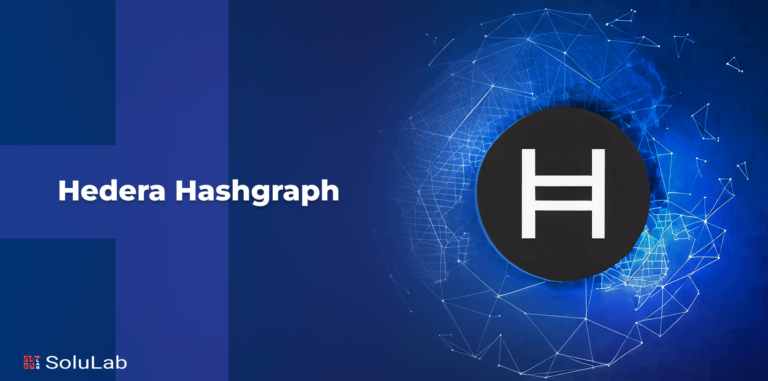With the fast-growing pace of artificial intelligence in all sectors and industries, let us find out how it unravels the various aspects of drug discovery. Now evidently, there is huge potential for artificial intelligence in general and machine learning, in particular in the medical sector. The stats also stand in favour of the same. Conventional methods of drug discovery turn out to have huge costs. It costs about $4 billion for a drug to complete all the trials and finally enter into the market. To exacerbate the situation, only 10% of the proposed drugs actually enter the market. According to Accenture, a leading professional consultancy service organization, key clinical application AI can lead to huge cost savings of about $150 billion, by the year 2026, in the US alone.
Traditionally, the clinical trials require the attendant or the volunteer to appear every few weeks to the research centre to validate the efficacy of the drug. This ends up limiting the amount of information and changes in the system that can be collected about that drug. Also, diseases that include the central nervous system pose an additional challenge. The drugs for these cannot be effectively tested on animals as they do not exhibit much resemblance to the human nervous system.
Prospective impact of Machine Learning in the Drug Discovery process
Machine Learning can increasingly impact the drug discovery process and potentially bring down the costs. The global drug discovery informatics market size is expected to grow at a compound annual growth rate of 12.6% by 2025. This was published in a report by the Grand view research in 2018.
Machine learning provides the capability to the systems to learn things on its own without any induction of information from a human node. The shift to machine learning can help researchers with their self computing algorithms, which in its essence, can provide a better history of the client and predict the change in behaviour or the implication of a certain treatment. Machine learning can enhance the drug discovery process is essentially two ways, and it can potentially and constructively assist in creating drug structures chemically, and analyze the implication of the drug and how certain types of patient would respond to it. It’ll smoothen up the process further, as it will take into account the previous records as well.
How will machine learning assist in various branches of medicine?
This section talks about some of the implications of blockchain that can potentially help in serving various branches of medicine.
Customized Treatment and genetic analysis of data
As times are changing, researchers and startups are starting to realize the role of machine learning in the pharmaceutical industry. The main aim is to analyze and interpret a patient’s genetic information in order to give them personalized medicines. Computational approaches to this kind of interpretation could deliver more accurate results faster. Naturally, the data collected and analyzed can then be computed and further replenished with the responsiveness of the drug on the patient. It can predict patterns and hence avoid unnecessary gaps caused in the drug discovery process.
The machine learning process can also help in interpreting a genetic code in a one-dimensional image or a one dimensional DNA chain. Also, since the genetic data is usually recorded in a string of letters, Natural Language Processing techniques can be induced to interpret and draw results from the data. Time Series data can be used to effectively reconstruct the genetic dataset and understand the responsiveness of the patient. Even in oncology, a time series of data can be implemented to implicit personalized treatments and resultantly deliver less toxic therapies.
Drawing analysis from databases
Analyzing and drawing accurate interpretations from the given reports can tackle the existing leakages and deficiencies in the current system. Using computational datasets and creating repositories for clinical data has seen to be an effective tool to get accurate results. Data integrated and created on machine learning mechanisms can also be effectively tied to the biometrics data records. Deep neural networks are an exuberant solution to represent medical datasets.
Machine learning mechanisms to be able to answer specific questions and not just general questions have to be designed integrating medical sciences, pharmaceuticals, and computer sciences to understand the pre-processed data to answer specific questions.
To draw proper conclusions, an integrated team and effort of field expertise with mutual cooperation become a necessity. There is already a strong realization amongst institutions to have this approach. The authors of the paper on Cancer System Biology Database developed a highly reactive and flexible database to exhibit computational analysis of cancer-related queries inhibiting various data types and studies. ETH Zurich has taken up the initiative of educating scientists with expertise in math and medical sciences about building a platform to integrate and analyze clinical and biomedical data.
The Swiss tumour board is researching towards implementing personalized biomarker-based medical decisions in medical treatments with ETH Personalized Health Technologies Platform Nexus.
Network analysis and image analysis
Studying and interpretation genetic datasets and patterns help in underlining the various behaviour patterns of drugs and the responses of the subject. The implication of deep neural networks can help in finding the neoteric targets and predict the optimum combination of drugs. The Barabasi group implied that unsupervised network analysis could be effectively used to predict novel drug behaviour patterns. A study on the same lines stated that machine learning network analysis could be used to identify cancer-associated gene pairs by the use of high definition datasets and interpretation, which would otherwise go unnoticed.
Another research also suggests that the gene network in the relative vicinity of a particular neighbourhood could be used to target and effectively find solutions and treatments to fight the disease.
Analyzing image data can be potentially put to use to identify phenotypes disclosed in the drug discovery process. Image-based screening of data can be used to understand the implications of drugs from the induction step to the treatment and the related side effects. Deep neural networks can be implemented to predict a drug’s structure from the expounding of previous records and the current behaviour pattern.
These algorithms of network analysis and image analysis can highly improve and speed up the drug discovery process.
Genetics and genomics
To make a machine learning structure understand the DNA and RNA sequences, first, we need to feed the system and train it to recognize those elements. There exist many ML algorithms to identify DNA classifications and sequences for analyzing, interpretation, conclusions, and predictions. Pattern recognition and a multi classifier based on deep neural networks play a crucial role in identifying RNA and DNA sequences. Another application of the same could be identifying different phenotypes of the diseases and accurately using that analysis to find biomarkers to treat the diseases.
With a strong database available of the gene sets, machine learning can use it to predict a deluge of gene sequences.
Evidently, this mechanism and techniques of predicting the gene structure can be hugely useful in predicting the effect of a drug and the probable outcome. The time period required for the same can also be estimated using the ML model of gene analysis. However, the studies’ researches of the same are at an infant stage.
Current innovations in the drug discovery dynamic
Insilico Medicines was successful in designing, testing, and delivering a drug withstanding all the clinical trials in just 46 days, a process that conventionally takes more than five years.
Google’s AI algorithm, popularly known as Alphafold, was able to analyze and interpret a 3D structure of proteins at astonishing speed with precision, leaving the top biologists and researchers in awe.
These are just a few examples from a myriad of opportunities that ML can create in the drug discovery dynamic.
Conclusion
Of Course, the innovations and the probable use cases of machine learning in the drug discovery process are too tempting, but there are substantial hindrances and obstacles before we achieve these goals.
The first and foremost concern is to achieve enough accuracy to ensure trust in the drug discovery process powered by machine learning mechanisms. This is owed to the fact that the study of the trials and the associated side effects is a very crucial stage of the drug discovery process. And we cannot compromise on this aspect as things could go badly downhill if this isn’t adhered to.
Now, naturally, to achieve this, the machine learning mechanisms have to be carefully analyzed to draw proper interpretations and then integrating it with the clinical data available.
Nonetheless, we can all agree, and after converting these stepping stones in learned lessons, Machine Learning can have huge implications in the drug discovery process and AI in the entire medical industry. These new mechanisms have opened up a deluge of prospects that will benefit parties on both the ends, by reducing costs and providing precise results. This vision of machine learning depends a lot on how the further developments turn out. If these methods are induced effectively, it could plausibly change the current dynamic of the drug discovery mechanism.




